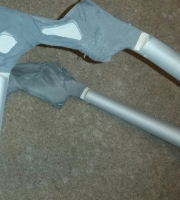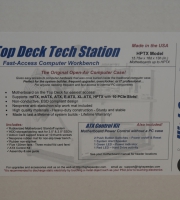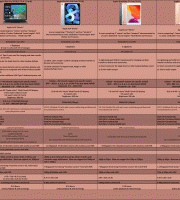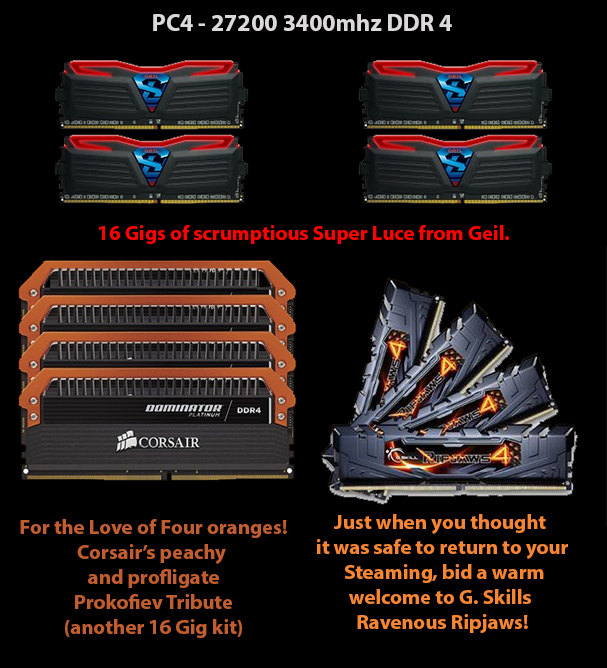


Despite the DMI’s comparatively narrow proportions preventing users from harnessing the totality of sunny point’s copious reserves, there was no longer the complication of crucial components being functionally dependant on a confounding cocktail of ifs, ors and buts.
No more meandering through manuals to determine whether that spicy, spacious stick of Nand would yield optimum results, or discovering by chance that it out right refused to play house the moment a SATA Express drive took up residence and that your vendor had not clearly disclosed as such in the documentation for any of its 257 motherboards, not least the one it took you an afternoon and an abandoned movie to choose.
No more “ultra” M.2 sockets that drew vitality from the CPU, necessitating the sacrifice of SLI to secure some nutritious non-volatility and no further need of expensive multiplexors to preserve priceless bandwidth for those who refused to compromise.
But what of performance overall? Unprecedented? Revolutionary? worth a shapely orifice in the savings account?
Intel’s “Tock” fabrications generally afforded healthier injections of pace, though not since the Nehalam pole-axed the Penryn had the devilish die forging emperor delivered anything to deviate from his militant master plan, or furnished his followers with an unexpectedly generous holiday bonus. Skylake was no exception.
These candied works of bar smothered art are intended to give a lucid, if linear idea of how performance has progressed as one core for the common man was callously crushed by the another. Those who may recall a similar chart I produced for “enthusiast” grade platforms will be crying out in dismay “but where are the ticks”? I yearned to account for them, but had I done so dependable data would have been defiled had I done so.
Unlike the royal pedigree of Yorkfiled to Bloomfiled to Gultown to Sandybridge, Ivybridge and Haswell extremists, product lines targeted at the less affluent did not foster flagship parts whenever an architectural revision occurred.
The i7-870 for instance was a top of the range “Lynnfield” wrought from Nehlam roots but had its transition to the 32nm process mirrored that of the Bloomfield i7-960, we’d have been treated to a “Clarkdale” counterpart with four cores and hyper-threading. Instead, every “Westmere” i7 variant besides the “Gulftown” was a “mobile” class processor and seldom, if ever paired off against commensurate desktop opposition. The “ticks” are therefore improvements you must decipher, and here is a quirky riddle to relate..
A “tock tick” tempts a “tock tock” trumps , in the search for slimming power
Though an Extreme “tick tock” is a Mainstream “tock tick”, until the 11th hour…
In plain English, just assume a boost of 10 percent for every shrink and switch, then relax and regard those ravishing colours.
Once bouts of brutal benching, forum flaming and pod-cast pontification had wandered their inevitable courses, the consensus was that Skylake’s prodigious feature set would procure it far greater popularity than three extra frames per second in Sony Vegas.
Hence, cantankerous critics who’d survived this far on a Sandy bridge by steadily increasing their frequencies to compensate for subsequent architectural shifts saw scant reason to break form until their trusty transistors could no longer sustain stability. Despite continued pledges, the lion’s share of games and applications were yet to extract a sliver of potential from multi-faceted CPUs of this and previous generations.
Nevertheless there were others who grew weary of inferior third party features that had since become native and desired a financially tenable portal to the perks provided by Haswell-E.
It was a Deep Blue Lake in the cosmos that brought DDR4 to the masses, added support for low voltage DDR3 with speeds of beyond 3400mhz attainable through a touch of tweaking, and all on a granular scale twice as accurate as what Haswell had allowed. Thus descended a deluge of DIMMS so dazzling they were a hazard to low flying aircraft.

Finally, and at long last, Skylake discretely and decisively separated the hypersensitive system clock from the frequency of the processor’s multiplier, returning us to the celebrated age of seamless over-clocking and eliminating CPU straps, an effective but convoluted workaround that was devised to prevent the PCI, USB and SATA buses – all formerly bound to the base clock – from straying too far out of spec and generating instabilities.
When combined with the multitudinous merits already discussed, these insightful amendments ensured Skylake could spin enough silver lining on a cloudless horizon to persuade mesmerized main streamers to part with pots of gold, leaving precious little marching money for the next rainy day.